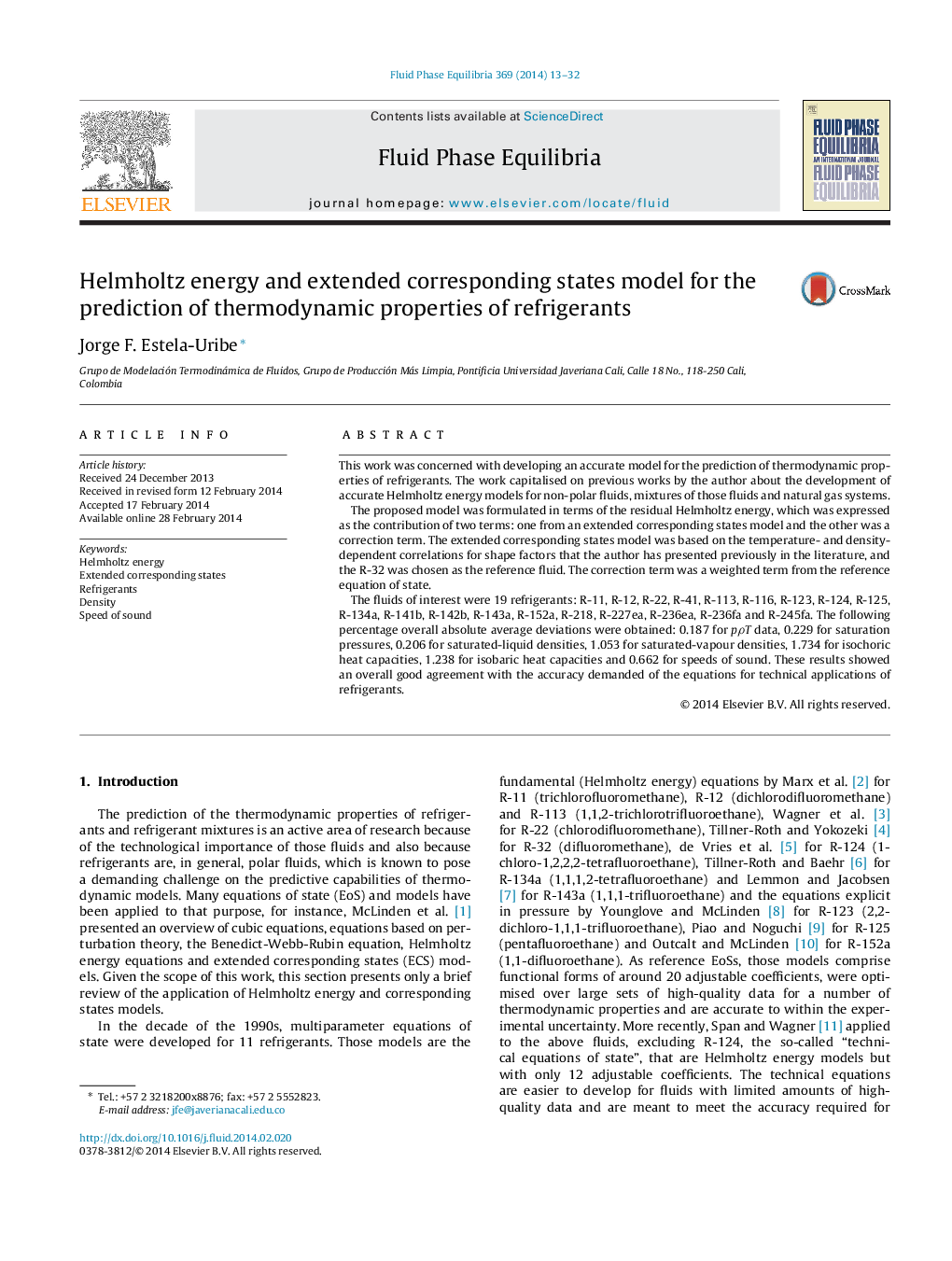| Article ID | Journal | Published Year | Pages | File Type |
|---|---|---|---|---|
| 200779 | Fluid Phase Equilibria | 2014 | 20 Pages |
•A Helmholtz energy model was presented for refrigerants.•The Helmholtz energy was obtained from an extended corresponding states model plus a temperature- and density-dependent correction.•For 19 fluids the percentage AAD in pρT data was 0.187.•Percentage AADs were 0.229 for vapour pressures. 1.238 for isobaric heat capacities and 0.662 for speeds of sound.•Results compared favourably with the demanded accuracy for technical Helmholtz energy equations for refrigerants.
This work was concerned with developing an accurate model for the prediction of thermodynamic properties of refrigerants. The work capitalised on previous works by the author about the development of accurate Helmholtz energy models for non-polar fluids, mixtures of those fluids and natural gas systems.The proposed model was formulated in terms of the residual Helmholtz energy, which was expressed as the contribution of two terms: one from an extended corresponding states model and the other was a correction term. The extended corresponding states model was based on the temperature- and density-dependent correlations for shape factors that the author has presented previously in the literature, and the R-32 was chosen as the reference fluid. The correction term was a weighted term from the reference equation of state.The fluids of interest were 19 refrigerants: R-11, R-12, R-22, R-41, R-113, R-116, R-123, R-124, R-125, R-134a, R-141b, R-142b, R-143a, R-152a, R-218, R-227ea, R-236ea, R-236fa and R-245fa. The following percentage overall absolute average deviations were obtained: 0.187 for pρT data, 0.229 for saturation pressures, 0.206 for saturated-liquid densities, 1.053 for saturated-vapour densities, 1.734 for isochoric heat capacities, 1.238 for isobaric heat capacities and 0.662 for speeds of sound. These results showed an overall good agreement with the accuracy demanded of the equations for technical applications of refrigerants.
